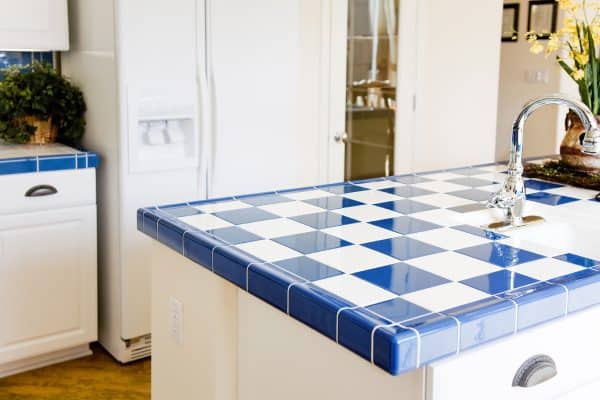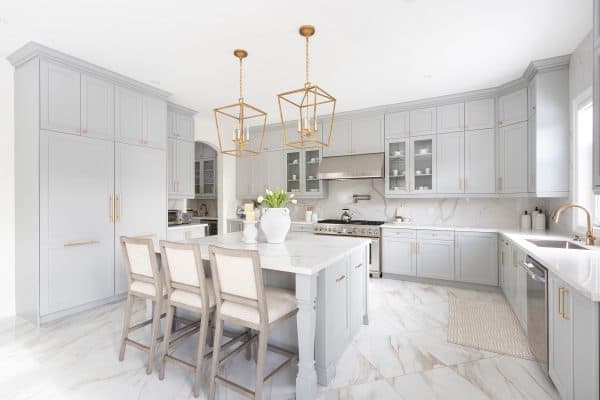Bamboo flooring is one of the choicest types of flooring for homes. If you want to install bamboo in your home, what sort of tile would be suitable to pair with bamboo flooring? We have inquired from interior decor experts and here's what we gathered.
Any type of tile can go with bamboo flooring but you should be mindful of the color. The sort of tiles that go best with bamboo flooring are those whose color blends seamlessly with the flooring. These tile colors include the following:
- Blue
- Yellow
- Green
- Pink
- Brown
- Neutrals
To better understand more about the sort of tiles whose colors blend with bamboo flooring, you should continue reading as we would be going into more details about this topic.
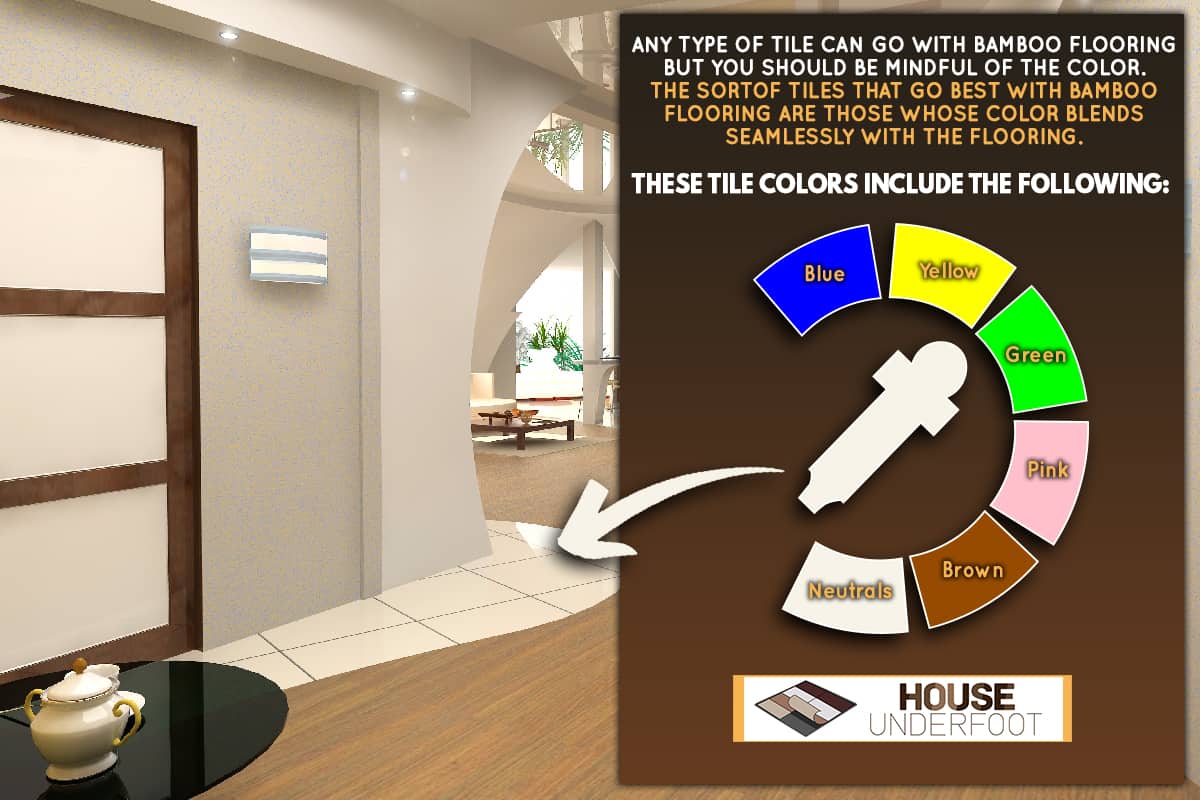
What Tile Colors Go With Bamboo Flooring?
In choosing the tiles, you would need to choose a proper color that goes with bamboo flooring. Here are a few colors that go with bamboo flooring.
Blue
Blue is one of the major colors that complete bamboo flooring. Blue tiles provide a sense of splendor to the aesthetic appearance of your home. Make sure the blue tiles are well blended with the bamboo flooring by evenly spacing them.
Yellow
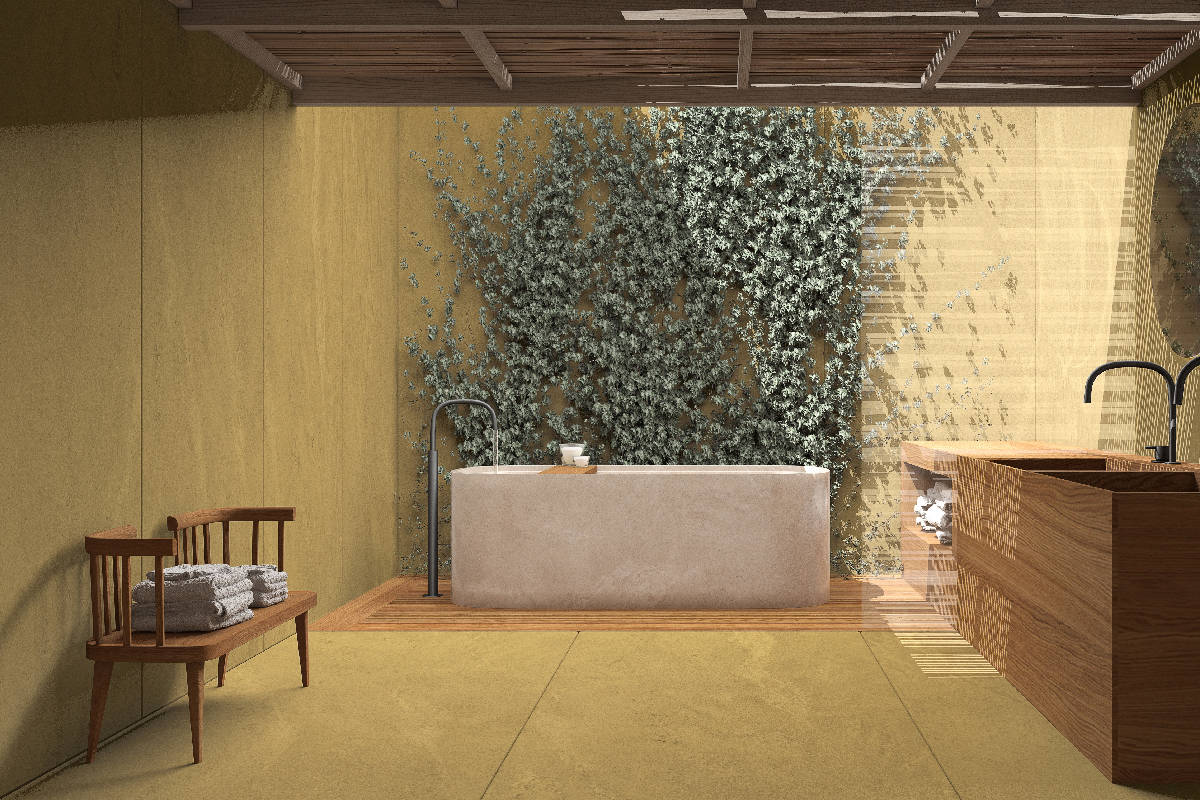
Yellow is another important color that blends with bamboo flooring. The yellow in this case is light yellow.
Together with bamboo flooring, yellow would provide a sense of quietness in your room. You can also include neutral colors such as white to compliment this blend.
Green
Green is a very important color that goes with bamboo flooring. To perfect the blend, you should go with yellow-green or leaf green shades.
The combination of green tiles and bamboo flooring could evoke warm, natural feelings.f
Pink
Pink is another secondary color that complements bamboo flooring. The color pink, which is a combination of white and red, would provide a sense of enthusiasm as well as tenderness.
Brown
Drawing from nature's suggestion, the color brown would be an easy blend in for bamboo flooring. It is the color most suitable because it is the color of the soil in which bamboo naturally grows.
Blend the bamboo flooring with brown tiles to give your space a sense of safety and privacy.
Neutral Colors
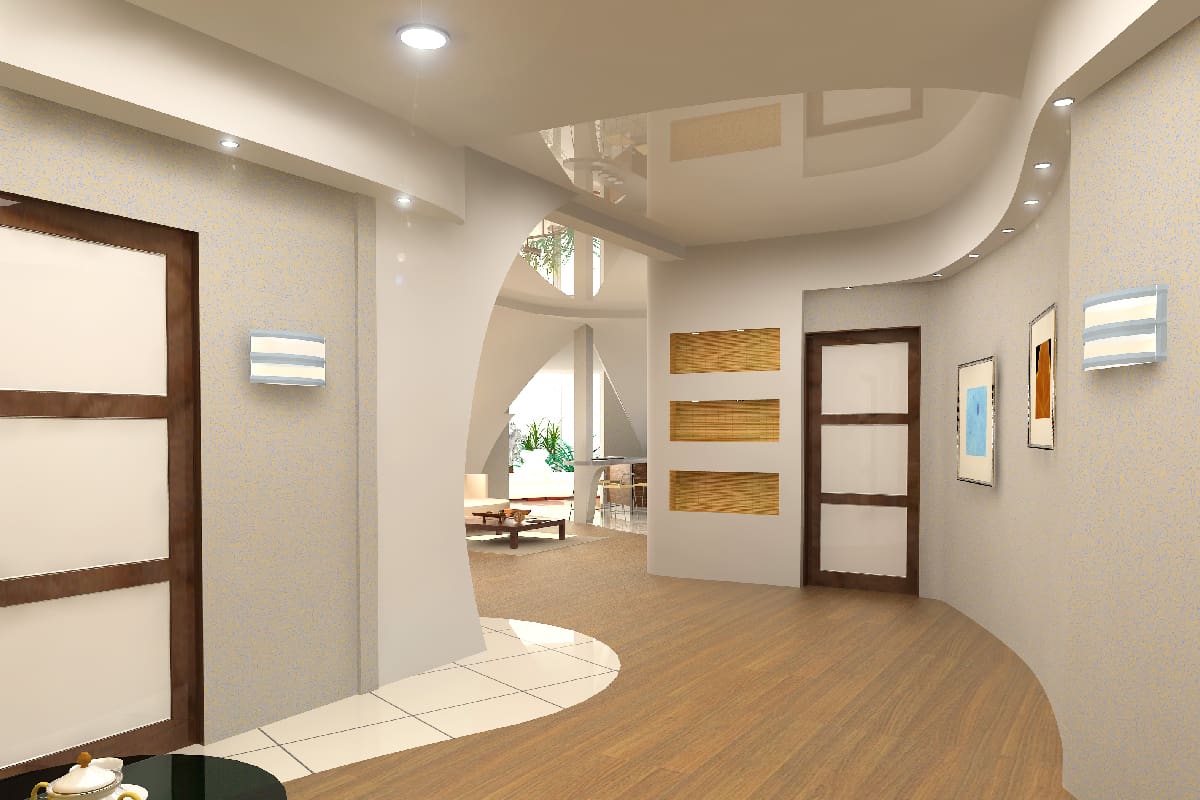
Neutral colors rarely contradict other colors. They are thus ideal for any situation requiring a blend. Neutral colors also provide a calm atmosphere. Utilize colors such as beige or grey.
Are Bamboo Floors Still In Style?
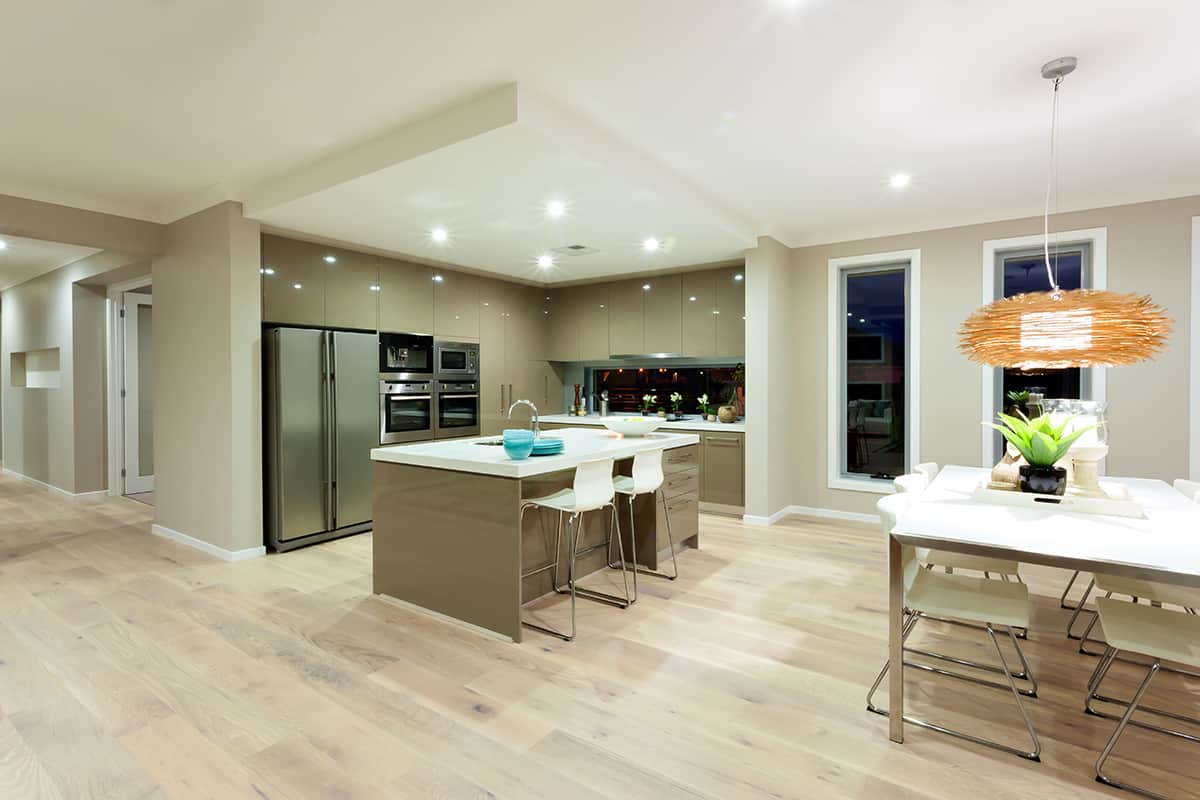
Yes, bamboo floors are very much still in style. In fact, the recent trends show that the popularity of bamboo floors has increased over the years and different styles of bamboo flooring are popularly adopted each year.
The statistics show that the bamboo flooring industry, which is estimated to be about 1.2 million dollars, is projected to grow by 25% within the next four years, that is, reaching 1.5 million dollars by 2026.
Bamboo floors are becoming more trendy because bamboo flooring is not just natural, environmentally friendly, and long-lasting but also has aesthetic appeal. This aesthetic value can improve the quality of your residence and increase the asset value of a home.
There is also the convenience of inexpensive price, the benefit of easy installation, and the advantage of little maintenance, all of which bamboo floors offer.
What Are The Advantages of Bamboo Flooring?

There are several advantages of bamboo flooring. Here are seven advantages of using bamboo flooring.
Environmentally Friendly
The use of hardwood means that trees would need to be cut down. This has brought deforestation together with its advent consequences on our environment.
Bamboos on the other hand are not trees that take long years to grow. They are grasses and they grow very fast. This means that their consistent use would not have adverse effects on the environment.
Strong
Bamboo floorings are very strong. They are capable of withstanding abrasions and when interwoven have three-fold strength. On the other hand, they are also very durable lasting for more than 10 years with minimum maintenance.
Easy Installation
Compared to other kinds of flooring, bamboo flooring can be installed rather effortlessly. The simplest kind of bamboo flooring which is floating bamboo can be easily set up without professional help.
Ease of Maintenance
When compared to other flooring types, bamboo is considered easier to maintain. Usually, regular sweeping and occasional vacuuming would maintain the quality and neatness of the bamboo floor.
In some cases, you could dampen cloth with soapy water to clean the floor or use a bamboo floor cleaner. Beyond these, no sophisticated cleaning is required.
Try Bona hardwood floor cleaner on your bamboo floors. See it on Amazon.
Bamboo Flooring is Easily Refurbished
When bamboo flooring gets scratched and loses its color, refurbishment would be required. This can easily be done by sanding the old bamboo flooring and applying a new layer.
With the exception of engineered bamboo flooring, this can be done for all kinds of bamboo floorings.
Pest Resistant
When compared to hardwood, bamboo flooring does relatively well when it comes to pest resistance. It is not conducive to dust mites and it is not edible to termites. Thus, you can be sure that it would not be subject to the decomposition that plagues hardwood.
Low Cost
Bamboo flooring is inexpensive when compared to other types of flooring. It is cheaper to buy, install, and maintain than hardwood flooring. The cost of buying and installing bamboo flooring per square foot is between $5 and $15.
Try a SAMPLE to see if bamboo flooring is right for your space. See it on Amazon.
What Are The Disadvantages of Bamboo Flooring?
There are many benefits of bamboo flooring that serve as incentives in modern times to install bamboo flooring in your home. However, there are some downsides to the use of bamboo flooring. Here are seven disadvantages of bamboo flooring:
Difficult to Blend
The first disadvantage of bamboo flooring is its ability to blend into your decor. Bamboo flooring does not accommodate all decorations due to its texture and its color tones.
Limited Tones
Bamboo is usually yellow or golden with brown markings. Although it is possible to get bamboo flooring in other tones such as white, grey, black, antique taupe, etc., such tones are still limited.
Try this mist grey bamboo flooring SAMPLE to see if it's right for your space. See it on Amazon.
It Can Be Affected By Water
Bamboos are grasses and not trees. This makes them very sensitive to water. If exposed to water, bamboo flooring could swell and bulge. Thus, you cannot use bamboo flooring for places like the bathroom,or kitchen.
Bamboo flooring is sensitive to water and by extension, to moisture. Bamboo flooring is affected more than hardwood by moisture in the atmosphere of a room.
In a room where bamboo flooring is desired, humidity must not get too high or drop too low.
Susceptibility to Scratches
Although bamboo flooring is long-lasting, its surface is susceptible to scratches. You should reduce the frequency by which objects are dragged across the bamboo flooring. This can be managed by the use of felt pads or constant refurbishing of the bamboo floor.
Protect your bamboo floors with this furniture pad set from Amazon.
Toxic Potential
Bamboo flooring of low quality can contain harmful toxins, depending on the sort of adhesive used and the process of manufacturing. Usually, bamboo flooring contains a number of toxins including urea-formaldehyde.
Arbitrary Grading System
One major disadvantage to bamboo flooring is that it is very hard to know what is of quality and what is not. This is because there is no established system for grading the quality of bamboo flooring.
Of course, there is the general "A" and "B" grading, but it is neither effective nor trustworthy. Bamboo may be rated "A" and still be of low quality.
Why Is My Bamboo Floor Buckling?
As we have noted, when a bamboo floor is exposed to water/moisture, it tends to swell and buckle. If your bamboo flooring is buckling, you should look out for any means such as water damage, plumbing issues, etc., by which water may be released into the environment.
Does Bamboo Flooring Increase Home Value?
Definitely! Bamboo flooring increases the value of your home, especially if you are upgrading from carpeting or vinyl. This is generally because home features that evoke positive emotions and exude affluence are known to add value to a home.
More specifically, recent trends in recent times show that many buyers and tenants are looking for homes with environmentally friendly features.
How Do You Style Bamboo Flooring?
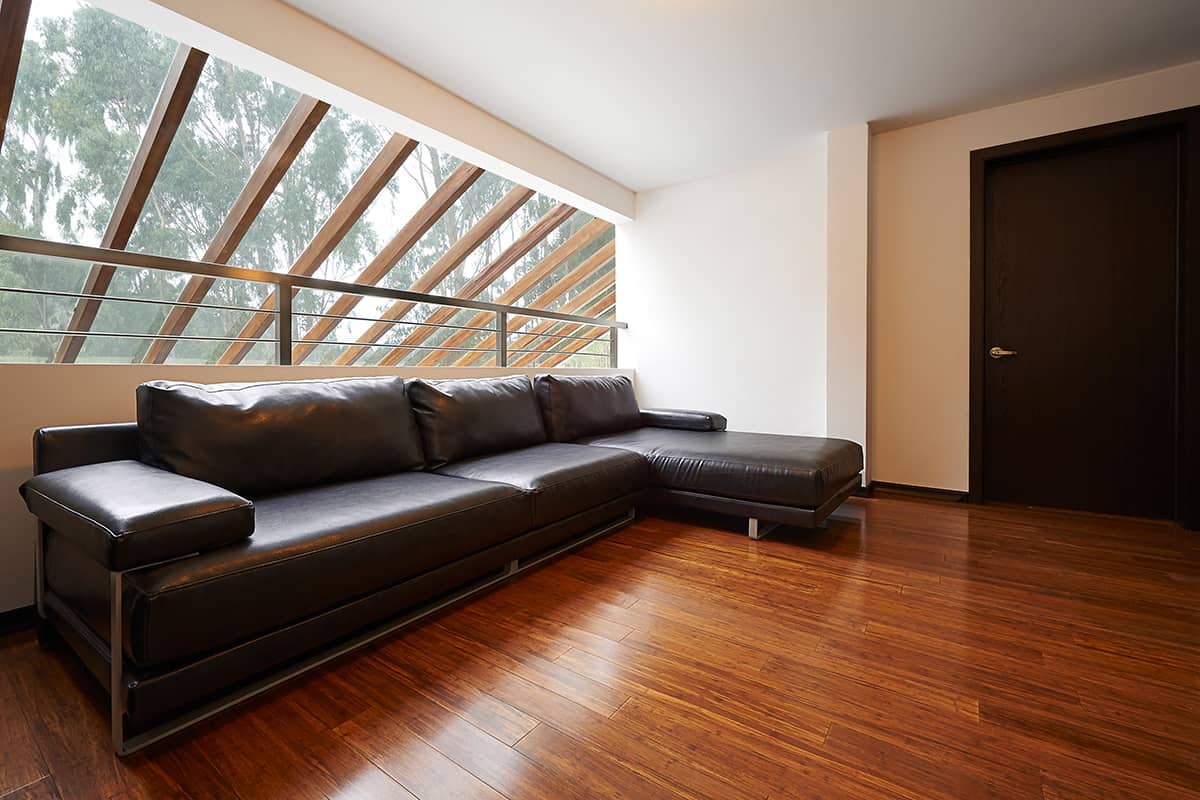
There are several ways to style bamboo flooring. Here are certain general rules to follow in styling bamboo flooring.
- The bamboo flooring should be dark so that other furniture in the room can fit.
- Use neutral or rustic colors for furniture.
- Use colors that complement the bamboo flooring for aesthetics and fittings
- Use vertical bamboo to create a uniform and orderly appearance.
Conclusion
We have been able to discuss details about bamboo flooring: tiles that go with it, its benefits, its disadvantages, and its lifespan, among others. If you intend to install bamboo flooring in your home, the information provided above would guide you in choosing the right tile color.
To learn more, check out these engaging articles:






